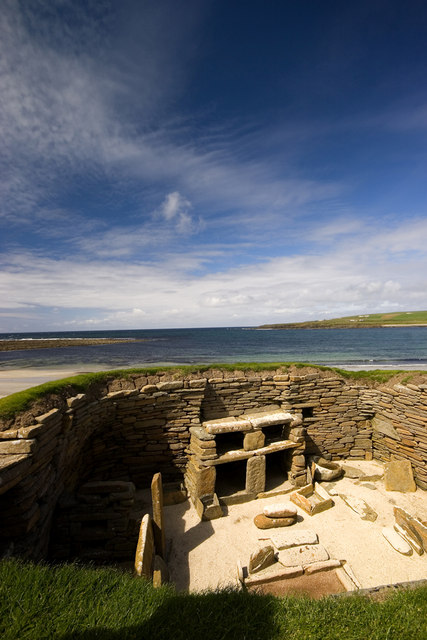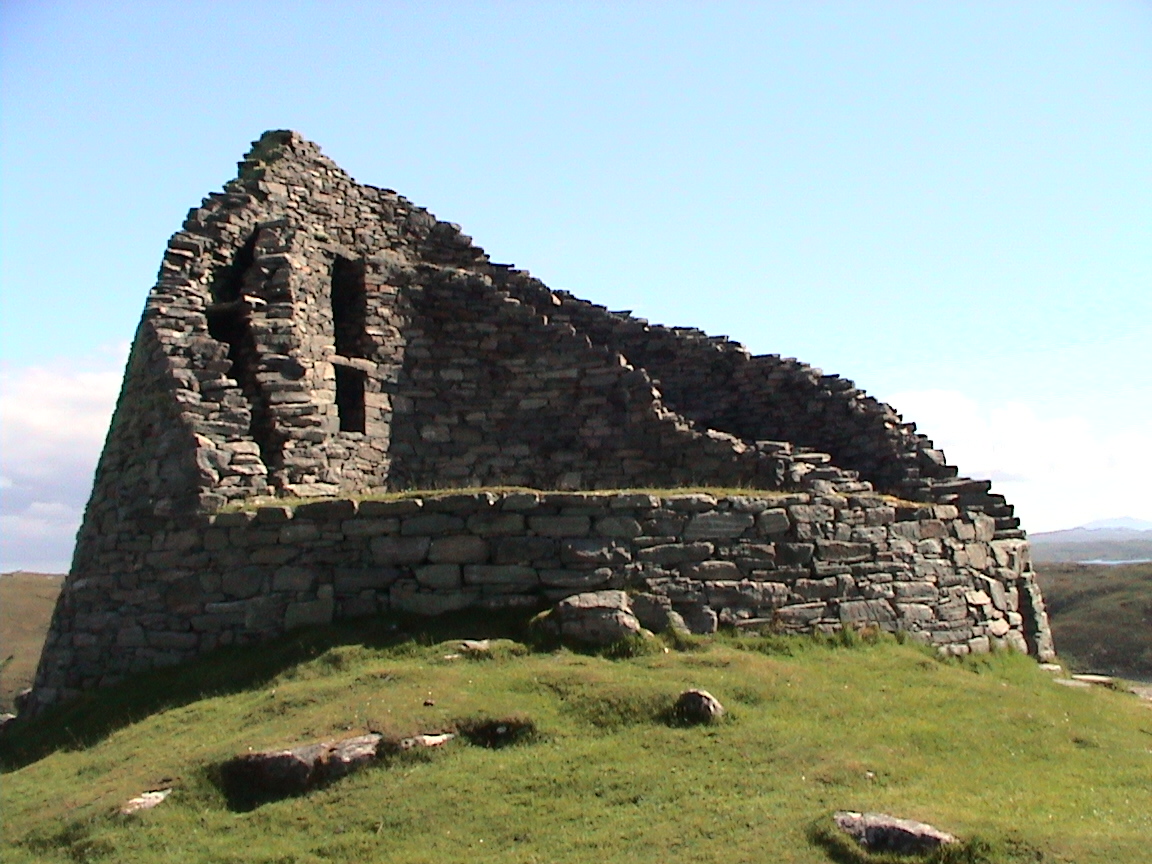|
Souterrain
''Souterrain'' (from French ''sous terrain'', meaning "under ground") is a name given by archaeologists to a type of underground structure associated mainly with the European Atlantic Iron Age. These structures appear to have been brought northwards from Gaul during the late Iron Age. Regional names include earth houses, fogous and Pictish houses. The term ''souterrain'' has been used as a distinct term from ''fogou'' meaning 'cave'. In Cornwall the regional name of ''fogou'' ( Cornish for 'cave') is applied to souterrain structures. The design of underground structures has been shown to differ among regions; for example, in western Cornwall the design and function of the fogou appears to correlate with a larder use. Etymology The name ''souterrain'' comes from the French language (''sous-terrain'' or ''souterrain''), in which it means "underground passageway" or refers to subterranea in general. In languages other than English, it is sometimes used to mean "basement", especi ... [...More Info...] [...Related Items...] OR: [Wikipedia] [Google] [Baidu] |
Drumlohan Souterrain And Ogham Stones
Drumlohan souterrain and ogham stones, known locally as the Ogham Cave, is a souterrain with ogham stones forming a National Monument located in County Waterford, Ireland. Location Drumlohan souterrain and ogham stones are located in farmland 4 km (2½ mi) east of Lemybrien. History The ogham stones were carved between 400 and 700 AD. The souterrain is believed to have been constructed around the 9th century AD and is aligned WSW, facing the setting sun. Souterrains were storage sites and places of refuge. In July/August 1867 a local farmer rediscovered the souterrain and ogham stones. In 1936 part of the souterrain was dismantled and some of the ogham stones re-erected above ground. Description Souterrain This souterrain gallery is about 4.9 m (16 ft) long and 1.3 m (4 ft) wide, with a roof height of up to 1.2 m (4 ft). It is constructed of orthostats roofed with lintels, and ten ogham stones were used as lintels and sidestones (some of the ... [...More Info...] [...Related Items...] OR: [Wikipedia] [Google] [Baidu] |
Donaghmore Souterrain
Donaghmore Souterrain is a souterrain and National Monument located in County Louth, Ireland. Location Donaghmore Souterrain is located west of Dundalk, near a cluster of houses. Donaghmore Souterrain is found in a village named Kilkerley (translates to rulya fein). History Souterrains are cave-like structures built as places of refuge and storage, and in Ireland they date between the 8th and 12th centuries. The souterrain was discovered in 1960 during the construction of a Louth County Council cottage. It was excavated by Etienne Rynne who found trenches, a pit, two post-holes. sherds of souterrain ware, a bronze pin, a whetstone and iron slag. Description The souterrain at Donaghmore is a complex of tunnels lined with dry stone walls, floors and ceilings, with corbels and lintels. The ceilings are over in height and the total length of tunnel is . It is largely dug into boulder clay but also into Silurian grit Grit, Grits, or Gritty may refer to: Food * Grit ( ... [...More Info...] [...Related Items...] OR: [Wikipedia] [Google] [Baidu] |
Alyth
Alyth () ( gd, Ailt) is a town in Perth and Kinross, Scotland, northeast of Blairgowrie and about northwest of Dundee. In 2016 the town had an estimated population of 2,400. First mentioned by name in a 12th-century royal charter of William the Lion, Alyth for many centuries was an important market town and entrepôt on long-established drove roads by which Highland farmers brought their sheep and cattle to lowland markets. Another royal charter in 1488, from James III of Scotland granted Alyth the status of Burgh of Barony entitled to stage markets and fairs. The 17th-century stone Packhorse Bridge still stands in the middle of the town (now pedestrian-only), later joined by two other stone bridges for wheeled traffic, emphasising the settlement’s importance as a river-crossing. Agricultural improvements and expanding markets for livestock in the south contributed to Alyth’s prosperity during the 18th and early 19th centuries, while water-power provided by the Alyth ... [...More Info...] [...Related Items...] OR: [Wikipedia] [Google] [Baidu] |
Fogou
A fogou or fougou (pronounced "foo-goo") is an underground, dry-stone structure found on Iron Age or Romano-British-defended settlement sites in Cornwall. The original purpose of a fogou is uncertain today. Colloquially called , , , giant holts, or holes in various dialects, fogous have similarities with souterrains or earth-houses of northern Europe and particularly Scotland, including Orkney. Fewer than 15 confirmed fogous have been found. Construction Fogous consist of a buried, usually corbelled stone wall, tapering at the top and capped by stone slabs. They were mainly constructed by excavating a sloping trench about wide and deep, lining it with drystone walling as stated, which was battered inwards and roofed with flat slabs; soil from excavation was heaped on top as at Pendeen Vau or incorporated in the rampart of the enclosure as at Halliggye Fogou, Trelowarren.Fox, Aileen (1973). ''South-West England 3500 BC – AD 600''. Pub. David & Charles. . p. 178. Funct ... [...More Info...] [...Related Items...] OR: [Wikipedia] [Google] [Baidu] |
Castle Bloody
Castle Bloody is a prehistoric feature on the island of Shapinsay, Orkney, Scotland. Hogan observes that while the feature is marked as a chambered mound on the UK Ordnance Survey map, the structure is more properly and specifically classified as a souterrain or earth house. Slightly to the north is located the ruined historic Linton Chapel. It is protected as a scheduled monument In the United Kingdom, a scheduled monument is a nationally important archaeological site or historic building, given protection against unauthorised change. The various pieces of legislation that legally protect heritage assets from damage and d .... See also * * References Shapinsay Prehistoric Orkney Archaeological sites in Orkney Scheduled Ancient Monuments in Orkney {{Orkney-stub ... [...More Info...] [...Related Items...] OR: [Wikipedia] [Google] [Baidu] |
Headland Archaeology
Headland Archaeology Ltd is a wholely owned subsidiary of the RSK Group. Headland provides archaeological services and heritage advice to the construction industry. Company history Headland Archaeology Ltd was established in 1996. Headquartered in Edinburgh, this company expanded as a provider of commercial archaeology services in the UK. Expansion into the Irish market led to the establishment of Headland Archaeology (Ireland) Ltd in 2000, in Co. Cork. Restructuring of the companies in May and June 2008 involved the renaming of Headland Archaeology Ltd as Headland Group Limited. A new company, Headland Archaeology (UK) Limited, was founded at this time to give, in conjunction with Headland Archaeology (Ireland) Ltd, a coherent structure to the group based on trading areas. The acquisition of Hereford-based Archaeological Investigations Ltd in 2010 expanded its UK operation. Archaeological Investigations Ltd was subsequently assimilated as a regional office of Headland Archae ... [...More Info...] [...Related Items...] OR: [Wikipedia] [Google] [Baidu] |
Angus, Scotland
Angus ( sco, Angus; gd, Aonghas) is one of the 32 local government council areas of Scotland, a registration county and a lieutenancy area. The council area borders Aberdeenshire, Dundee City and Perth and Kinross. Main industries include agriculture and fishing. Global pharmaceuticals company GSK has a significant presence in Montrose in the north of the county. Angus was historically a province, and later a sheriffdom and county (known officially as Forfarshire from the 18th century until 1928), bordering Kincardineshire to the north-east, Aberdeenshire to the north and Perthshire to the west; southwards it faced Fife across the Firth of Tay; these remain the borders of Angus, minus Dundee which now forms its own small separate council area. Angus remains a registration county and a lieutenancy area. In 1975 some of its administrative functions were transferred to the council district of the Tayside Region, and in 1995 further reform resulted in the establishme ... [...More Info...] [...Related Items...] OR: [Wikipedia] [Google] [Baidu] |
Shapinsay
Shapinsay (, sco, Shapinsee) is one of the Orkney Islands off the north coast of mainland Scotland. There is one village on the island, Balfour, from which roll-on/roll-off car ferries sail to Kirkwall on the Orkney Mainland. Balfour Castle, built in the Scottish Baronial style, is one of the island's most prominent features, a reminder of the Balfour family's domination of Shapinsay during the 18th and 19th centuries; the Balfours transformed life on the island by introducing new agricultural techniques. Other landmarks include a standing stone, an Iron Age broch, a souterrain and a salt-water shower. With an area of , Shapinsay is the eighth largest island in the Orkney archipelago. It is low-lying and fertile, consequently most of the area is given over to farming. Shapinsay has two nature reserves and is notable for its bird life. At the 2011 census, Shapinsay had a population of 307. The economy of the island is primarily based on agriculture with the exception of a ... [...More Info...] [...Related Items...] OR: [Wikipedia] [Google] [Baidu] |
Scotland
Scotland (, ) is a country that is part of the United Kingdom. Covering the northern third of the island of Great Britain, mainland Scotland has a border with England to the southeast and is otherwise surrounded by the Atlantic Ocean to the north and west, the North Sea to the northeast and east, and the Irish Sea to the south. It also contains more than 790 islands, principally in the archipelagos of the Hebrides and the Northern Isles. Most of the population, including the capital Edinburgh, is concentrated in the Central Belt—the plain between the Scottish Highlands and the Southern Uplands—in the Scottish Lowlands. Scotland is divided into 32 administrative subdivisions or local authorities, known as council areas. Glasgow City is the largest council area in terms of population, with Highland being the largest in terms of area. Limited self-governing power, covering matters such as education, social services and roads and transportation, is devolved from the ... [...More Info...] [...Related Items...] OR: [Wikipedia] [Google] [Baidu] |
Broch
A broch is an Iron Age drystone hollow-walled structure found in Scotland. Brochs belong to the classification "complex Atlantic roundhouse" devised by Scottish archaeologists in the 1980s. Their origin is a matter of some controversy. Origin and definition The word ''broch'' is derived from Lowland Scots 'brough', meaning (among other things) fort. In the mid-19th century Scottish antiquaries called brochs 'burgs', after Old Norse ', with the same meaning. Place names in Scandinavian Scotland such as Burgawater and Burgan show that Old Norse ' is the older word used for these structures in the north. Brochs are often referred to as '' duns'' in the west. Antiquarians began to use the spelling ''broch'' in the 1870s. A precise definition for the word has proved elusive. Brochs are the most spectacular of a complex class of roundhouse buildings found throughout Atlantic Scotland. The Shetland Amenity Trust lists about 120 sites in Shetland as candidate brochs, while the ... [...More Info...] [...Related Items...] OR: [Wikipedia] [Google] [Baidu] |
Orkney Islands
Orkney (; sco, Orkney; on, Orkneyjar; nrn, Orknøjar), also known as the Orkney Islands, is an archipelago in the Northern Isles of Scotland, situated off the north coast of the island of Great Britain. Orkney is 10 miles (16 km) north of the coast of Caithness and has about 70 islands, of which 20 are inhabited. The largest island, the Mainland, has an area of , making it the sixth-largest Scottish island and the tenth-largest island in the British Isles. Orkney’s largest settlement, and also its administrative centre, is Kirkwall. Orkney is one of the 32 council areas of Scotland, as well as a constituency of the Scottish Parliament, a lieutenancy area, and an historic county. The local council is Orkney Islands Council, one of only three councils in Scotland with a majority of elected members who are independents. The islands have been inhabited for at least years, originally occupied by Mesolithic and Neolithic tribes and then by the Picts. Orkney wa ... [...More Info...] [...Related Items...] OR: [Wikipedia] [Google] [Baidu] |








